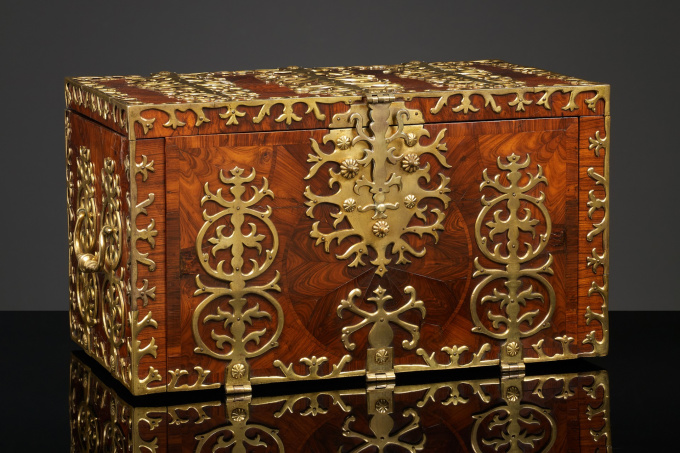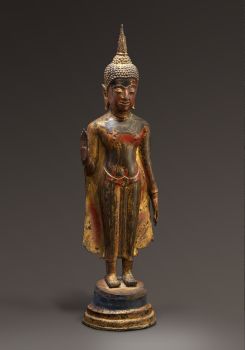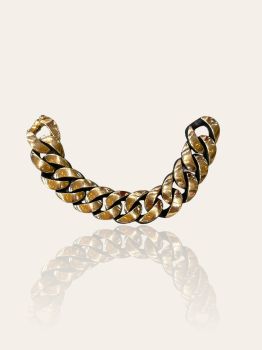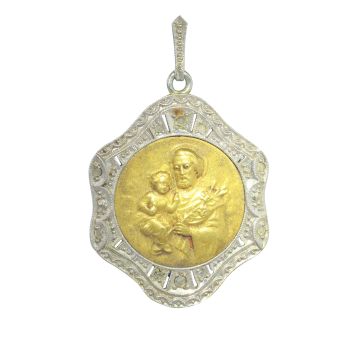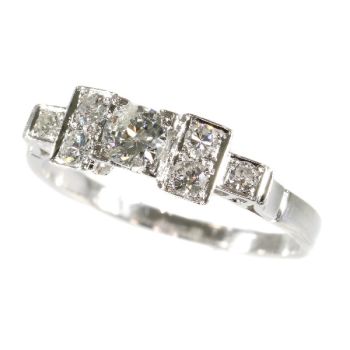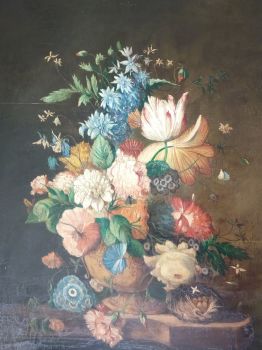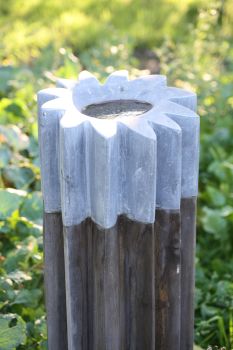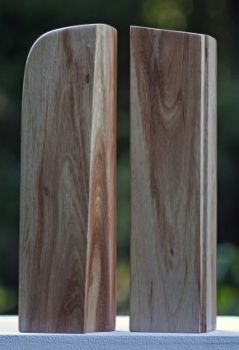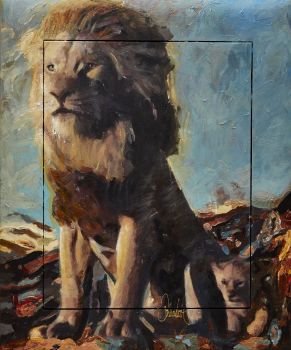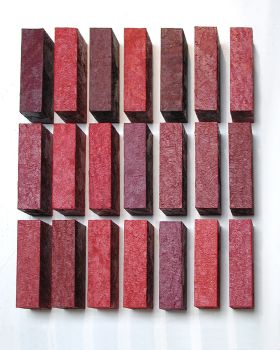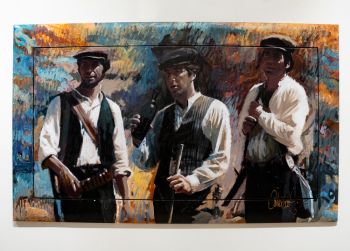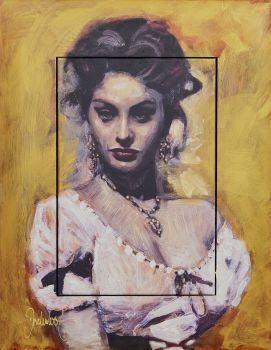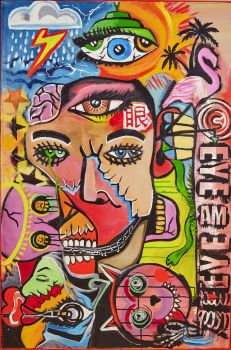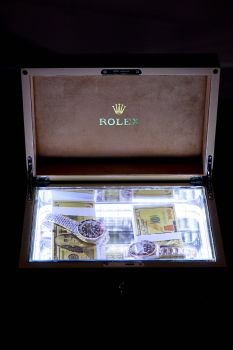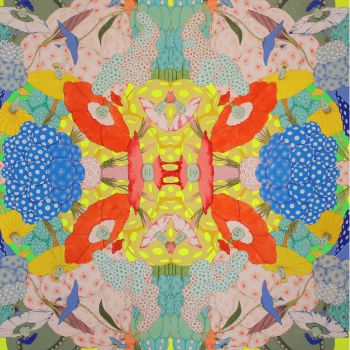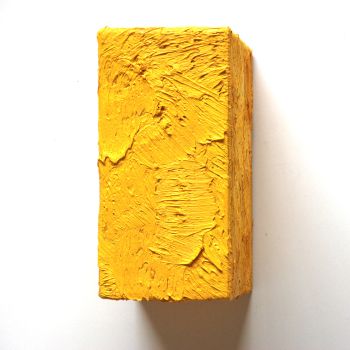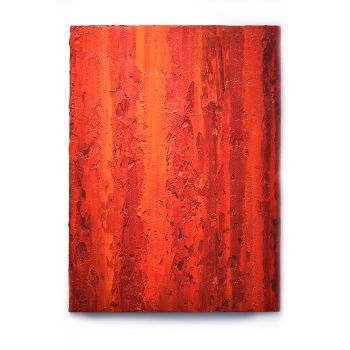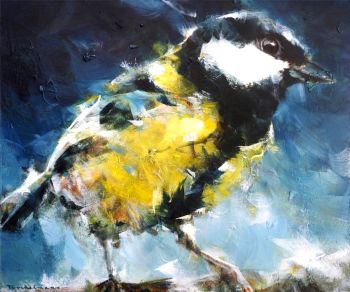Strongbox 1695 - 1710
Onbekende Kunstenaar
HoutOlijfEikenhout
34 ⨯ 62 ⨯ 36 cm
ConditionExcellent
Momenteel niet beschikbaar via Gallerease
- Over kunstwerkAn oak strongbox with olive wood veneer. The box is richly ornamented with brass fittings (with traces of gilding) in the shape of leaves. The elaborate fittings should prevent the box from damage during long travels. The box can easily be moved with the help of the handles on the sides. Centrally there is a large escutcheon, that can be opened with a secret lever. When the lid is lifted, one gets access to the main storage space. In the lid there are to panels that can be opened to hold documents. There are four more secretive storage spaces in the interior. The actual keyhole, used to open the front panel, is hidden behind the lock of the lid.
With a key the front panel can be unbolted. The panel opens to the front. Once opened two small drawers are visible. Hidden to the eye are five more secret compartments. The interior is entirely finished in solid rosewood and rosewood veneer.
In general this type of strongboxes is considered to be French or Flemish. Nevertheless, the vast majority of these cases stem from England. Recent research hypothesizes they were made in London between 1600 and 1720.
The earliest evidence for the production of this type of strongboxes comes from the inventory of Edward Traherne, a renowned joiner who died in London in 1675. Traherne’s trading stock contained a number of shipping and traveling chests with various specifications. It may be noted that several of them still had to be finished.
English furniture makers advertised with “Strong-Boxes” throughout the first part of the eighteenth century. A typical quality of these boxes are the iron rods that are vertically positioned in the side panels and that can be screwed onto the wooden floor of a ship or carriage.
Literature:
London Metropolitan Archives, Orphans’ Court Record, Roll 117, Box 15.
Peter Thornton and Maurice Tomlin, ‘Ham House’, Furniture History, XVI (1980), pp. 1-194.
Th. H. Lunsingh Scheurleer, ‘Documents on the Furnishing of Kensington House’, Walpole Society, Vol. 38 (1960-62), pp. 15-58.
National Archives, LC9/280, 281.
Bowett, Adam. Woods in British Furniture-Making, 1400-1900: An Illustrated Historical Dictionary. Wetherby: Oblong Creative, 2012. 193-94.
Geoffrey Beard and Christopher Gilbert (eds), Dictionary of English Furniture Makers 1660-1840, Leeds (1986, pp. 16 & 200 & 378).
Coleridge, Anthony. Chippendale Furniture: The Work of Thomas Chippendale and His Contemporaries in the Rococo Taste, Vile, Cobb, Langlois, Channon, Hallett, Ince and Mayhew, Lock, Johnson and Others, Circa 1745-1765. Cirencester: Collectors’ Book Club, 1973. 44. - Over kunstenaar
Het kan voorkomen dat een kunstenaar of maker onbekend is.
Voor sommige werken is het niet te bepalen door wie het gemaakt is of dat het is gemaakt door (een groep) ambachtslieden. Voorbeelden zijn beelden uit de Oudheid, meubels, spiegels of handtekeningen die vaak niet duidelijk of leesbaar zijn. Maar ook sommige werken zijn helemaal niet gesigneerd.
Ook kunt u de volgende beschrijving vinden:
•"Toegeschreven aan …." waarschijnlijk een werk van de kunstenaar maar niet zeker of gedeeltelijk
•“Atelier van ….” of werkplaats van” een werk uitgevoerd in het atelier of atelier van de kunstenaar, eventueel onder zijn toezicht
•“Cirkel van ….” een werk uit de periode van de kunstenaar die zijn invloed laat zien, nauw verbonden met de kunstenaar maar niet noodzakelijkerwijs zijn leerling
•“Stijl van ….” of “Volger van ….” een werk uitgevoerd in de stijl van de kunstenaar, maar niet noodzakelijk door een leerling; kan eigentijds of bijna eigentijds zijn
•“Wijze van ….” een werk in de stijl van de kunstenaar maar van latere datum
•"Na …." een kopie (van welke datum dan ook) van een werk van de kunstenaar
•“Getekend…”, “Gedateerd….” of “Ingeschreven” dan is het werk gesigneerd/ gedateerd/ ingeschreven door de kunstenaar. De toevoeging van een vraagteken duidt op een element van twijfel
•"Met handtekening ...", "Met datum ...", "Met opschrift..." of “Draagt signatuur/datum/opschrift” dan is de handtekening/datum/opschrift toegevoegd door iemand anders dan de kunstenaar
Artwork details
Related artworks
- 1 - 4 / 12
Onbekende Kunstenaar
A Surinam-themed Amsterdam long-case clock1746 - 1756
Prijs op aanvraagZebregs & Röell - Fine Art - Antiques
 Gecureerd door
Gecureerd doorGallerease Magazine
Johannes van Dreght
Antique Dutch still life flowers in vase1740 - 1800
Prijs op aanvraagGallerease Selected
 Gecureerd door
Gecureerd doorDanny Bree
Onbekende Kunstenaar
Een Gotische zuidelijke Nederlanden wandklok1580 - 1590
Prijs op aanvraagNico van den Assem restauratie
1 - 4 / 24Onbekende Kunstenaar
Japanese transition-style lacquer coffer 1640 - 1650
Prijs op aanvraagZebregs & Röell - Fine Art - Antiques
Onbekende Kunstenaar
A rare Japanese export lacquer medical instrument box1650 - 1700
Prijs op aanvraagZebregs & Röell - Fine Art - Antiques
Onbekende Kunstenaar
A rare Japanese export lacquer medical instrument box1650 - 1700
Prijs op aanvraagZebregs & Röell - Fine Art - Antiques
 Gecureerd door
Gecureerd doorDanny Bree
Onbekende Kunstenaar
AN IVORY NETSUKE OF A DUTCHMAN FROLICKING WITH A SMALL BOY18th century
Prijs op aanvraagZebregs & Röell - Fine Art - Antiques
Onbekende Kunstenaar
The Stamford Raffles Secretaires.1800 - 1813
Prijs op aanvraagZebregs & Röell - Fine Art - Antiques
1 - 4 / 24Onbekende Kunstenaar
Russische icoon met een uitgebreide Deesis1600 - 1650
Prijs op aanvraagKunsthandel H.W.C. Dullaert Icons
1 - 4 / 24

